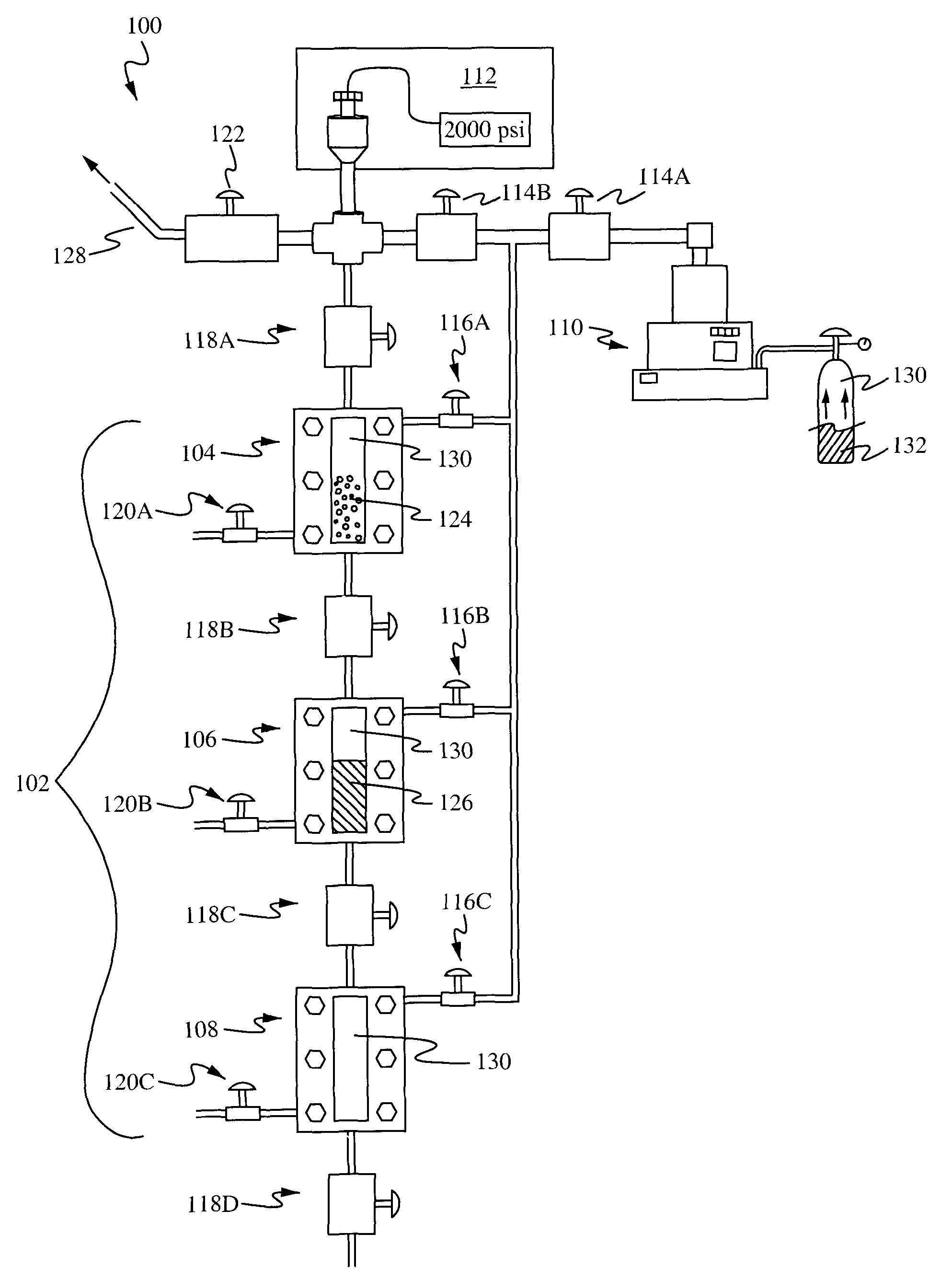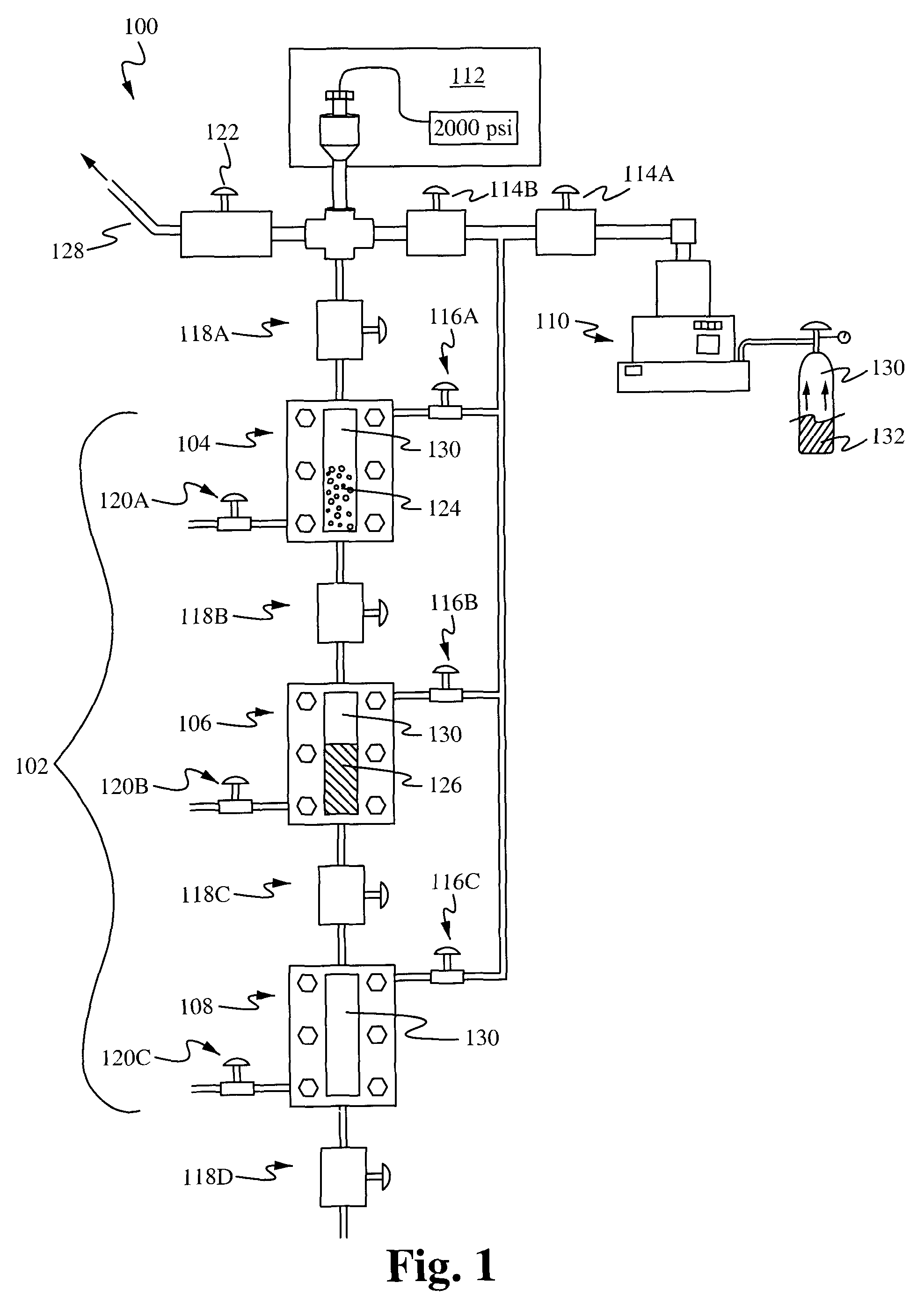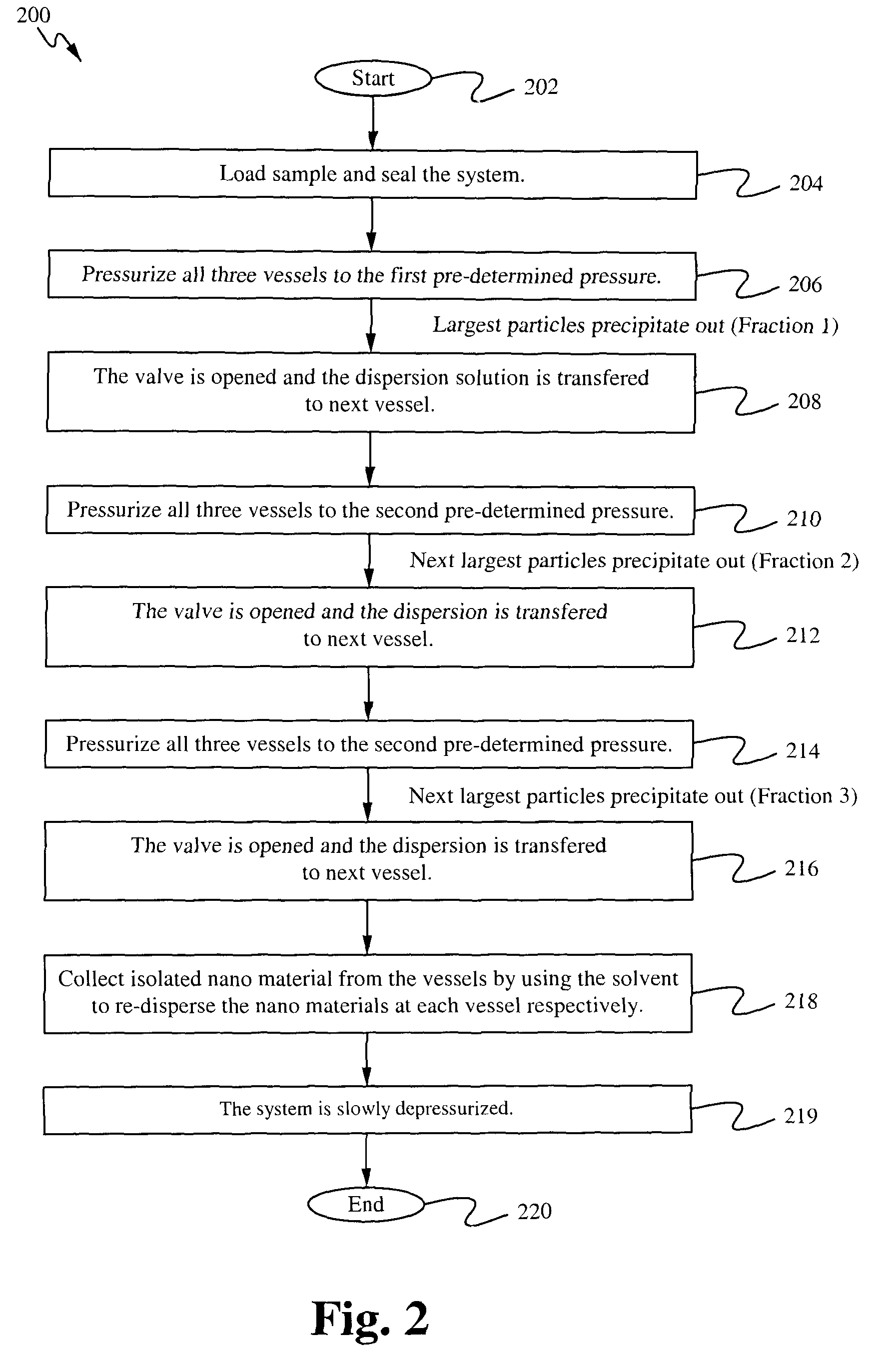Method and apparatus for physical separation of different sized nanostructures
a nanostructure and physical separation technology, applied in the field of nanomaterial separation, can solve the problems of high price of pressure pumps and drastic increase in liquid phase volume, and achieve the effects of increasing the solubility of gas, reducing the cost of pressure pumps, and reducing the volume of liquid phas
- Summary
- Abstract
- Description
- Claims
- Application Information
AI Technical Summary
Benefits of technology
Problems solved by technology
Method used
Image
Examples
Embodiment Construction
[0028]Methods and apparatuses for precise, rapid and improved separation of nanoparticles by size relies on a solvent / antisolvent method that uses a gaseous antisolvent to create a tunable gas expanded liquid are provided. The antisolvent is carbon dioxide (CO2) in some embodiments. Pressurized gaseous antisolvent is placed over a nanoparticle solution. By changing the pressure of the antisolvent, the resulting fraction of antisolvent in the solution is able to be increased or decreased. Given that particle dispersibility is a function of antisolvent in the liquid, particles of any given target sizes are able to be made to precipitate by simple manipulation of the antisolvent pressure. Multiple monodisperse particle populations are able to be rapidly fractionated by adjusting only the antisolvent pressure and the liquid location, thereby eliminating the difficulties associated with traditional methods that are time and solvent intensive, expensive, and / or have limited throughput.
[00...
PUM
| Property | Measurement | Unit |
|---|---|---|
| pressure | aaaaa | aaaaa |
| pressure | aaaaa | aaaaa |
| volume | aaaaa | aaaaa |
Abstract
Description
Claims
Application Information
 Login to View More
Login to View More - R&D
- Intellectual Property
- Life Sciences
- Materials
- Tech Scout
- Unparalleled Data Quality
- Higher Quality Content
- 60% Fewer Hallucinations
Browse by: Latest US Patents, China's latest patents, Technical Efficacy Thesaurus, Application Domain, Technology Topic, Popular Technical Reports.
© 2025 PatSnap. All rights reserved.Legal|Privacy policy|Modern Slavery Act Transparency Statement|Sitemap|About US| Contact US: help@patsnap.com



